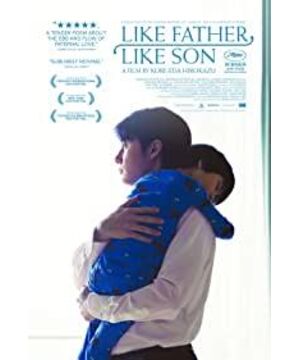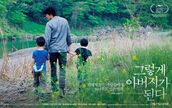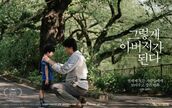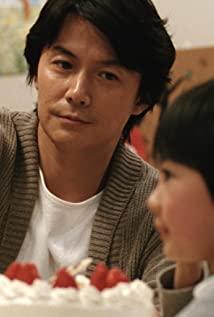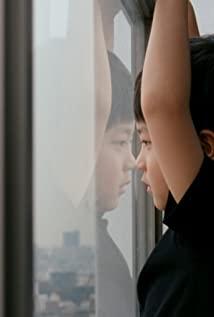Drama in Life-A Brief Description of the Social Contradictions in "Like Father Like Son" Under the calm sea, there are turbulent waves. The midwife nurse, jealous of Nonomiya's many family conditions, sent his children, Liu Qing and Saiki Yuda's children. Qing Duo exchanged, and an accidental admissions inspection brought the matter to the surface, subverting the lives of the two families, and leading to many family conflicts. The film "Like Father Like Son" tells such a dramatic story. Art comes from life, but it is higher than life. Like his predecessors, Hirokazu Kore-eda's films use realistic themes to reveal common but inconspicuous contradictions in society. Father and child in Yasujiro Ozu's "Tokyo Story" The contradiction about support is the same as the contradiction between the concept of father and daughter in "The Flower of the Other Side" written by him. "Like Father Like Son" also explores the importance of the father's companionship to the family with the dramatic stories of two families, and deeply reveals the contradiction between middle-aged people's treatment of family and work. It was Hirokazu Koreeda who inherited the characteristics of the previous Japanese directors such as Akira Kurosawa or Yasujiro Ozu's "restraint and forbearance" camera characteristics mentioned above, and narrated the story of "Like Father Like Son" in a slow and original way through the accurate handling of long shots. At the same time, it innovated the use of light and color to deepen the deep expression of the theme. 1. The use of static long shots in Yasujiro Ozu's films has become his personal image language. One is to slow down the narrative rhythm and let the audience savor the details of life in the film. "Tokyo Story" has a general look and feel, allowing the audience to enter the film as a bystander to examine and think about the contradiction between parents and children in the film. It was Hirokazu Kore-eda who, as his disciple, got the essence. In the work "Non-Stop Walking", the long shot fully restores the life of the protagonist Liang and his wife returning to their hometown. The slow narrative rhythm gives the audience the feeling of being naturally substituted into the film and feels the director's apology for the deceased mother. In "Like Father Like Son", the connection of long shots is faster, which improves the narrative rhythm, resulting in a better viewing experience. However, the handling of long shots can still reflect the core through the plot. For example, the nurse, the son and the mother, angrily denounced the return of the compensation, and when many were walking alone in the deserted streets, the director used a fixed long shot to describe the process of the backs slowly disappearing, showing that he changed his mind after family conflicts emerged. The image of loneliness allows the audience to appreciate the process of changing their moods, and also lays the groundwork for spending more time with their family in the future. At the same time, it leaves a deeper space for the audience to ponder in a relatively low atmosphere, resulting in many conflicts with parents, wives and children. Reasons for alienation. 2. The use of lighting to set off the transformation of the characters As Hirokazu Ededa has more creative experience, the control of lighting is more innovative. In the early "Never Stop Walking", the use of light in the whole film did not change significantly. The overall light used was soft light, and the picture-to-light ratio was small, which created a gentle atmosphere. He calmly tells the story of the protagonist when he goes home and chats with his family. "Like Father Like Son" is his later work. The use of light changes at a certain stage to set off the character's mood or destiny. In terms of light, most of the film is still soft light, and the light is relatively small to convey the warmth of the family theme, and the characters are mainly portrayed by the method of positive light. However, at the turning point of the film or when the fate and mood of the characters change, the light used in the film will form a greater contrast. The silhouette is normal, and it is different from the lighting used in most of the film. This plot point uses hard light, and the light ratio is larger than the picture to depict, which sets off many confused and struggling moods, and indicates to the audience that many families have undergone earth-shaking changes and life. There are many conflicts with the family behind the change. 3. Deepening the color contrast of the theme expression is that Hirokazu Koreeda not only innovated the use of lighting, but also boldly tried new ways to adjust the color of the picture. The use of color is the same as the characteristics of light, and most of the pictures still use warm tones and high saturation. , but the front-to-back contrast of colors is mainly used to deepen the theme. The contrast appears in the identity differences that reflect many and Zhaimu. When painting a lot of high-rise apartments, the color saturation of the picture is high, and the main color is light yellow, which highlights the comfort and high-end of the apartment. When depicting the low-rise bungalow in Zhaimu, the color of the picture is low-saturation, with dark green as the main color, reflecting its filth and simplicity. A comparison before and after, the audience can feel the gap between the two identities. The two have different identities and different attitudes towards family. The director also uses the technique of color contrast when describing the two accompanying their children. For example, when many "sons" Qingduo live in the real father Zhaimu's house, and Zhaimu repairs toys for Qingduo and other children, the color of the picture is high, showing warm tones and high saturation, while when many real fathers Zhaimu repair toys for Qingduo and other children, the color brightness of the picture is high. When his son "Liu Qing" confronted him because of playing the piano indiscriminately, the director used a low-saturation, cool-toned picture to describe it. Comparing before and after, the audience can feel Zhaimu's happiness when he is with his family and a lot of indifference to his family. Combined with the difference in the identities of the two, the theme is about to emerge. Many people who see the big from the small reflect the middle-aged people who devote more energy to work and blindly use material things to fill the love for the family. This directly hits the audience's heart. Isn't he on the screen exactly the same as many Libra parents in real life who can't balance family and life? As one of the few films in the history of Japanese film and film that can be shortlisted for the Palme d'Or, "Like Father Like Son" shows extraordinary depth with a simple subject matter, uncovering obvious scars that no one dares to touch, stinging countless bodies For the audience of parents, let them think about the contradiction and balance between family and career.
View more about Like Father, Like Son reviews


